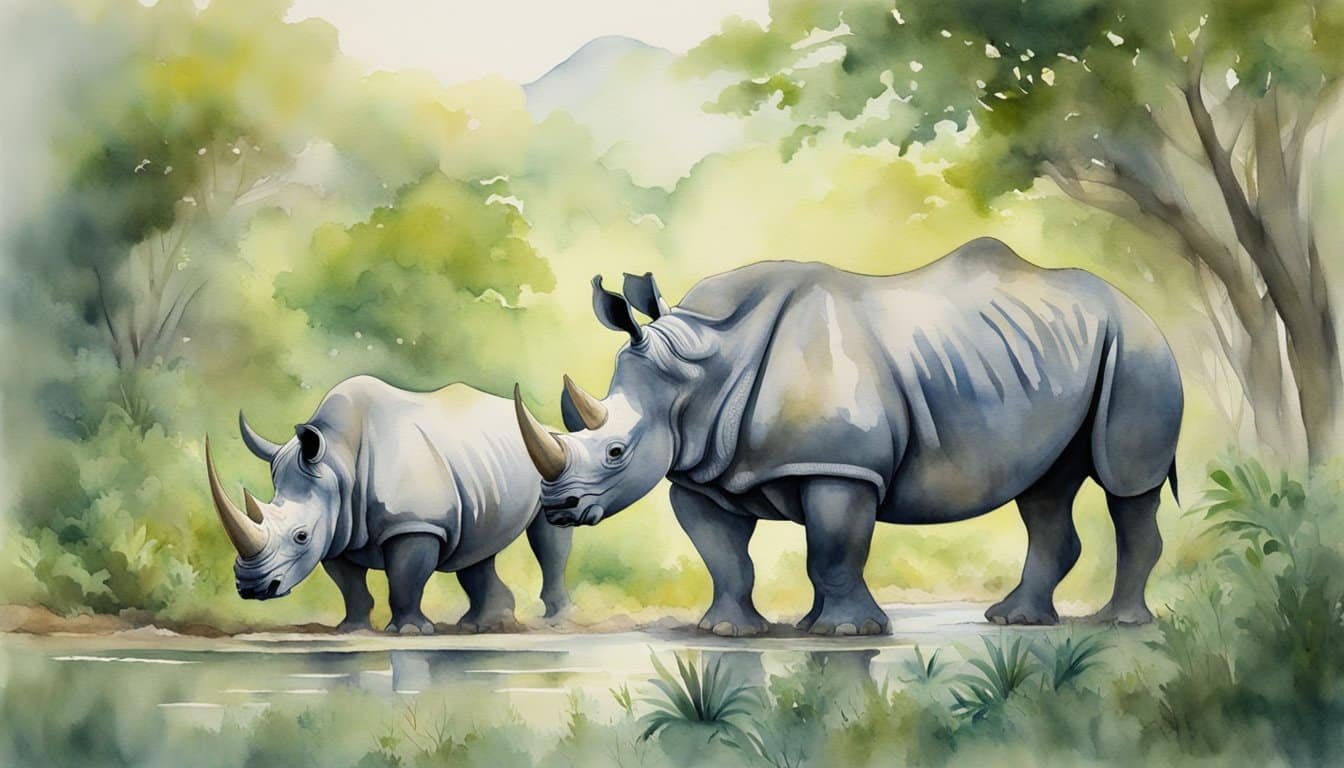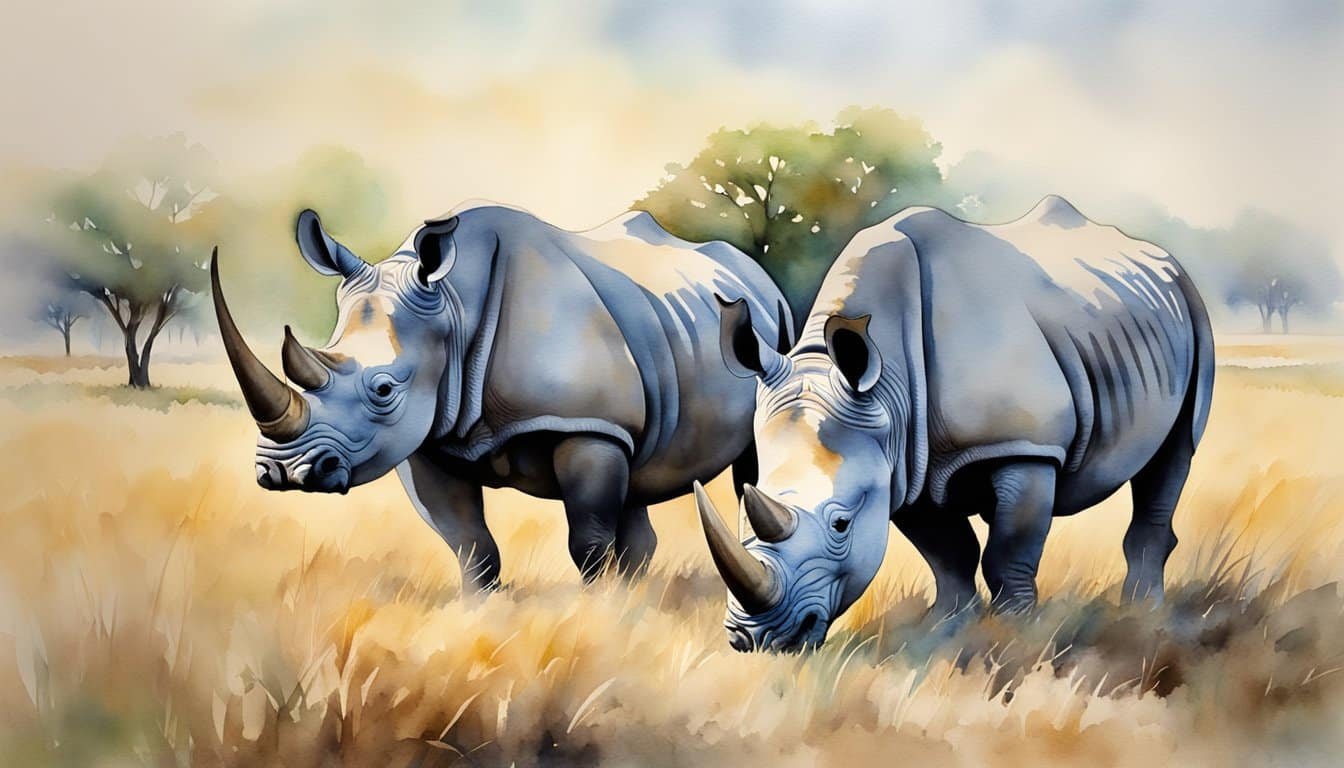Understanding Rhino Dehorning
Dehorning rhinos is a conservation technique used to prevent poaching; the absence of the horn makes them less of a target for poachers.
Rhino Species and Horn Functions
Two of the most prominent species affected by dehorning are the black rhinoceros and the white rhinoceros, which include the northern and southern subspecies. The horn of a rhino is not just for show; it serves critical functions such as defense, foraging, and attracting mates. These horns are unique to rhinos and are deeply rooted in their evolution, as they have been used to shape the landscapes they inhabit and to establish social hierarchies within their groups.
The Process of Dehorning Rhinos
The process of dehorning a rhino is usually carried out by a vet to ensure it is done safely and humanely. It involves tranquilizing the rhino and using a chainsaw to remove the horn, leaving behind just a stub. This procedure must be done with precision to avoid harm, and the rhino will subsequently have a significantly reduced horn size. Dehorning does not harm the rhino—it’s similar to trimming a fingernail—but the horn will eventually regrow, requiring repeat procedures.
Threats and Conservation Efforts

The survival of rhinos is hanging in the balance largely due to poaching for their horns, leading to alarming declines in their populations. Fortunately, concerted conservation efforts and stringent legal measures are fighting to turn the tide for these magnificent creatures.
Poaching Crisis and Anti-Poaching Initiatives
Poaching remains the most significant immediate threat to the continued existence of rhinos, driven by the demand for rhino horn. In countries like South Africa and Kenya, rhino horns are highly coveted in some Asian markets, including China and Vietnam, for their purported medicinal properties and as status symbols. This has spawned a black market that is tough to dismantle. As a response, reserves have ramped up their anti-poaching initiatives. The World Wildlife Fund (WWF) supports efforts such as employing highly trained anti-poaching rangers and using advanced technology like drones for surveillance.
Wildlife Conservation and Legal Measures
Conservation strategies are crucial in preserving rhinos and their role in ecosystems. In Africa, dedicated rhino reserves work tirelessly to protect the species, and some of them have seen encouraging increases in rhino populations. Legal measures are also a stronghold in the fight against poaching, with law enforcement agencies imposing severe penalties on poachers. Governments in countries like South Africa have joined forces with international agreements to clamp down on the trade, and the introduction of strict laws to protect these endangered animals is a pivotal step in ensuring their future.
Impacts and Adaptations

When rhinos lose their horns, either through human intervention or other means, the change can ripple across their behavior to conservation efforts.
Behavioral Changes and Ecosystem Roles
Rhinos without horns might experience a shift in their day-to-day activities. In Kruger National Park, where security measures may include the removal of rhino horns to discourage poaching, bulls unable to display their full strength can alter territories and social interactions. These changes can affect how these animals perform their ecological function, such as their role in foraging patterns that aid seed dispersal and habitat maintenance.
Males can find themselves at a disadvantage when competing for mates, as the horn is a symbol of power and dominance. Rhino horns are also used for digging and accessing water and salt licks; without them, their ability to navigate and utilize their home ranges can be compromised.
Economics of Rhino Horn and Conservation
The value of the rhino horn has deep economic impacts on both illegal markets and conservation strategies. Keratin, the substance rhino horns are made of, is mistakenly believed to have medicinal properties, driving a black market that threatens the species with illegal slaughter.
To counteract poaching, conservationists sometimes preemptively dehorn rhinos, a move that requires careful monitoring to ensure it doesn’t negatively impact the animal’s social interactions or make them more vulnerable. Conversely, this action can sometimes reduce the likelihood that these animals will be targeted, potentially aiding population productivity by reducing mortality rates.

